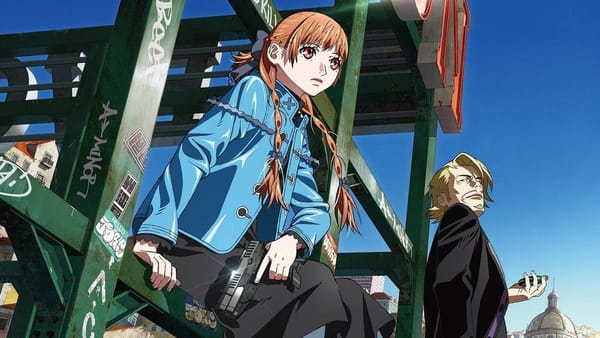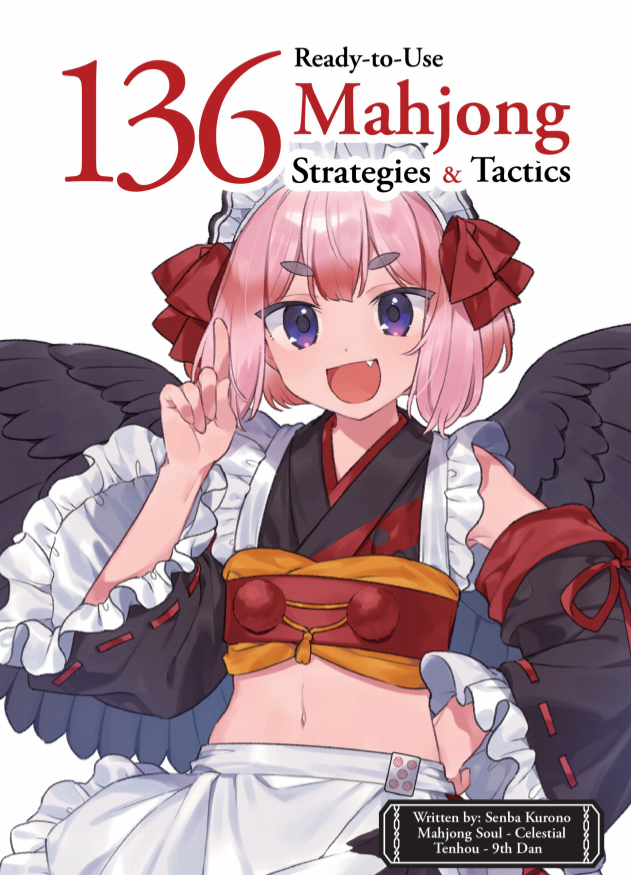Mobile Suit Gundam: Doan's Island redeems a 40-year-old mistake, with interest
The new film bleeds love for its characters
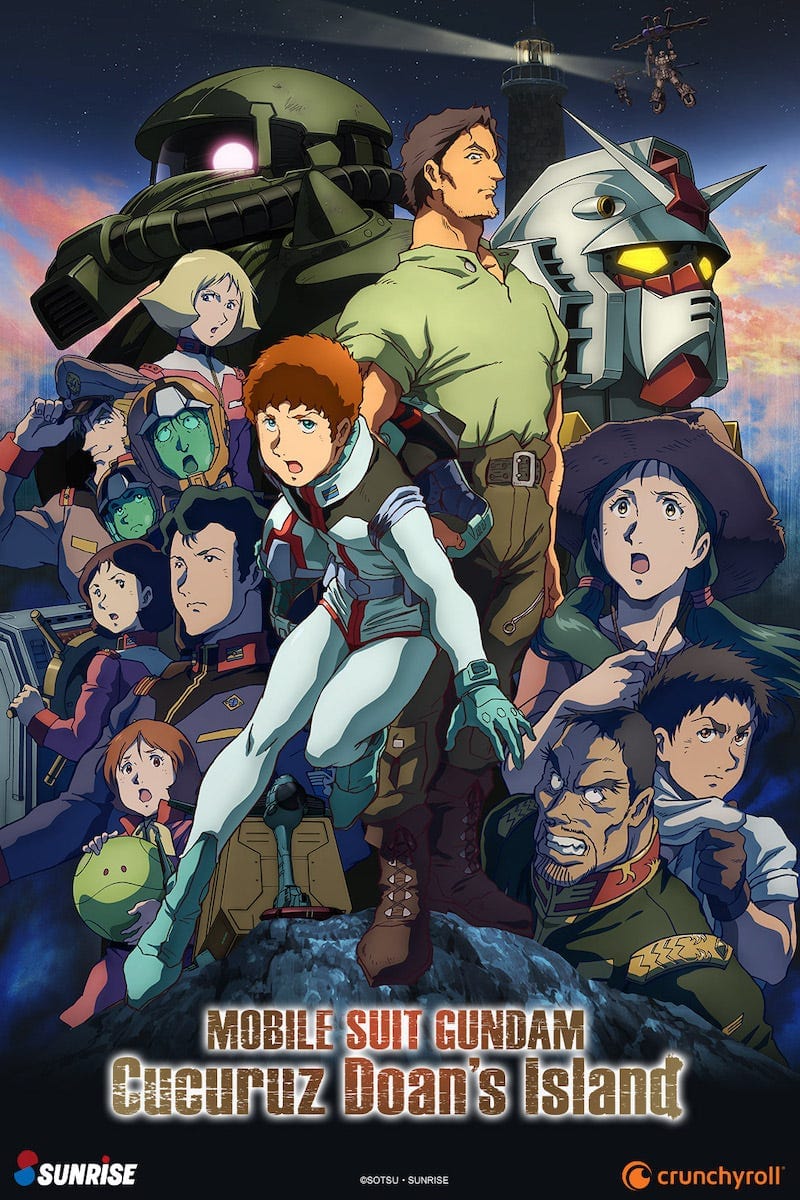
(As a bonus for subscribers, I have also written a review of the actual TV series episode this film is based on.)
When the new Gundam movie was first announced, hardcore fans took it like an elaborate practical joke. Mobile Suit Gundam: Cucuruz Doan’s Island… the movie. That Doan’s Island. You’re kidding, right?
They weren’t, which is always the best kind of joke.
Mobile Suit Gundam: Cucuruz Doan’s Island transforms a lost, reviled episode of the 1979 Gundam TV series into a genuinely moving feature with all the warmth and sincerity of early Gundam at its best.
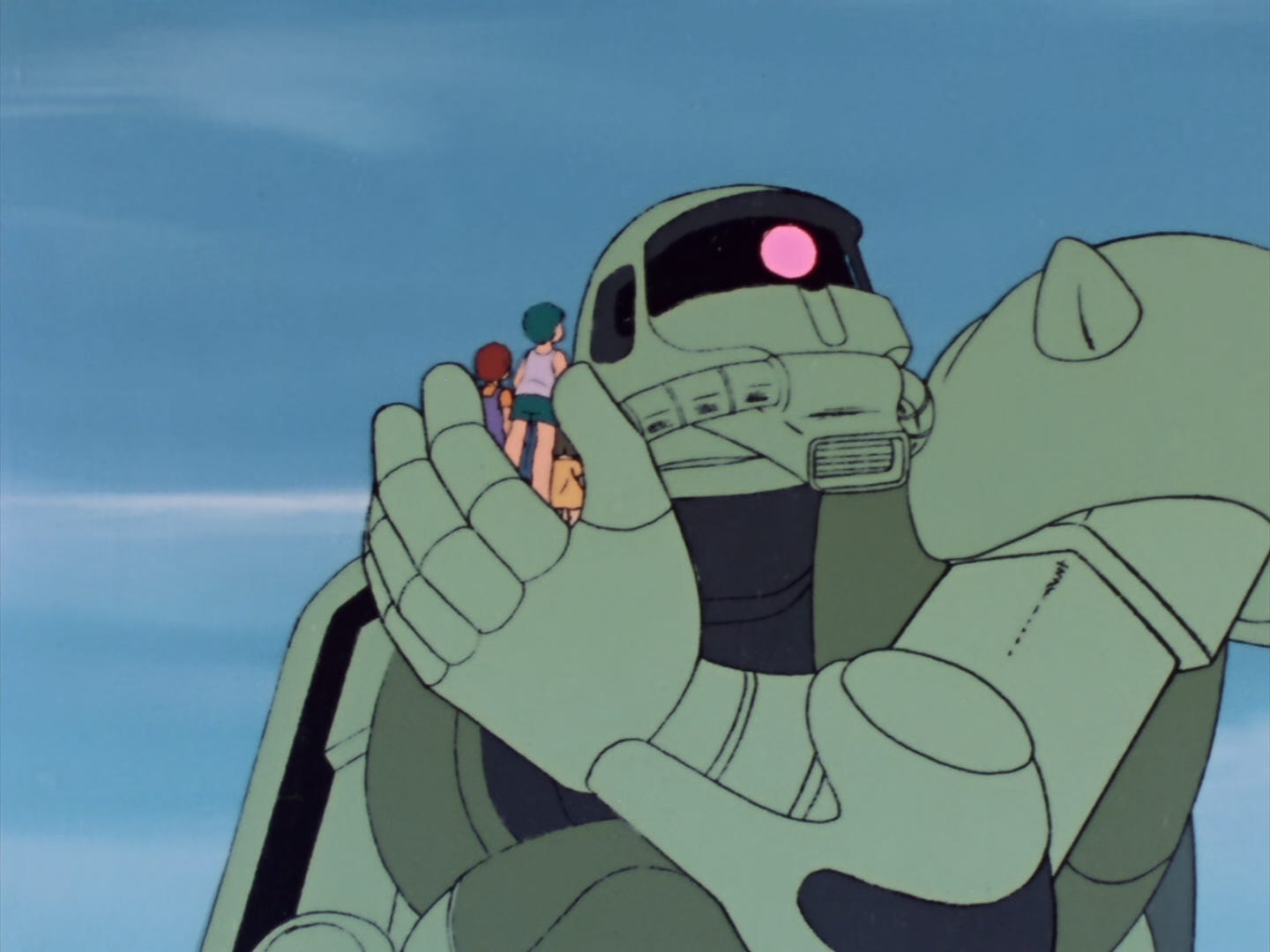
But first, a little background: Doan’s Island is the 15th episode of Mobile Suit Gundam, famous for being shoddily produced and out of character for the series. The fully outsourced episode sticks out like a sore thumb, to the extent that series creator Yoshiyuki Tomino has famously blocked it from foreign releases.1
For this film, original animation director Yoshikazu Yasuhiko— the brutally overworked guy who had the episode outsourced in the first place— takes the director’s seat to fix a 40-year-old mistake and save the story, indeed the honor, of a good man named Cucuruz Doan.
Character love
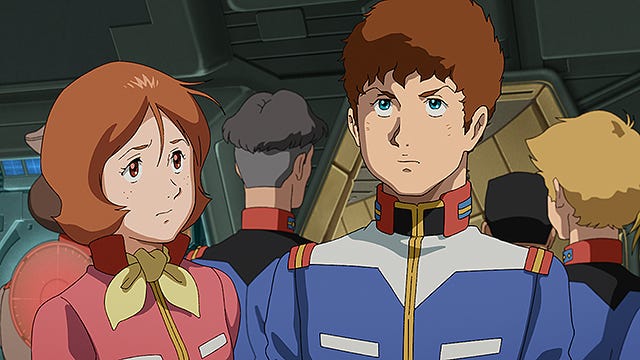
My favorite thing about the original Mobile Suit Gundam series— particularly in the movie trilogy, and especially the third film, Encounters in Space— is Yasuhiko’s subtly expressive character animation. These characters feel like living, breathing people in a way that is hard to come by in animation of any kind. Coupled with Tomino’s passionate, heavy-handed dialogue, the resulting characters are truly dense with meaning and emotion: you could talk about them forever. They feel like people you know. (Weird people, I admit.)
Doan’s Island is a treat for the Yas fan; 40 years later and with Sunrise’s full resources at his command, he permeates the two-hour film with his human touch. This movie speaks its love for the cast of Gundam not with words, but with constantly expressive character animation.

In one brief scene the exhausted captain Bright Noa lets his guard down and exposes his insecurity, as his consultant and future wife Mirai Yashima patiently pours him a coffee, her eyes comforting. I felt myself smile; I know and love these two, and here they are in front of me. It’s spot on.
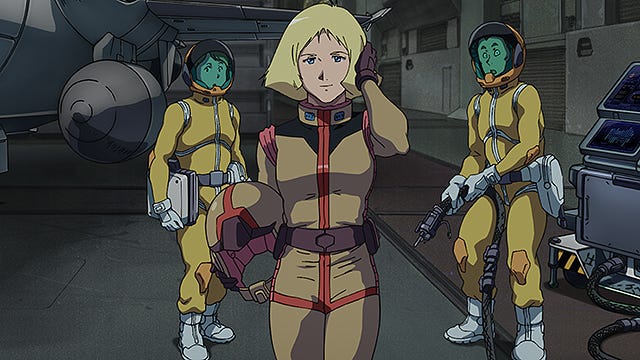
The film knows exactly where these characters are. As is noted by an opening card, Doan’s Island captures the cast at a very specific moment, early in their journey: the 15th of 43 episodes, specifically.2
The motley civilian crew of the White Base is still inexperienced. Our hero Amuro is plagued with recent trauma and racked with self-doubt. Rival Char Aznable makes an obligatory cameo as a looming threat, but really, it’s too soon in the story for all that. These people are just trying to find their feet.
And that’s where they find Doan Cucuruz, an enemy deserter who’s fled the war and is running a makeshift shelter for children who he helped to orphan.
Redeeming a joke episode
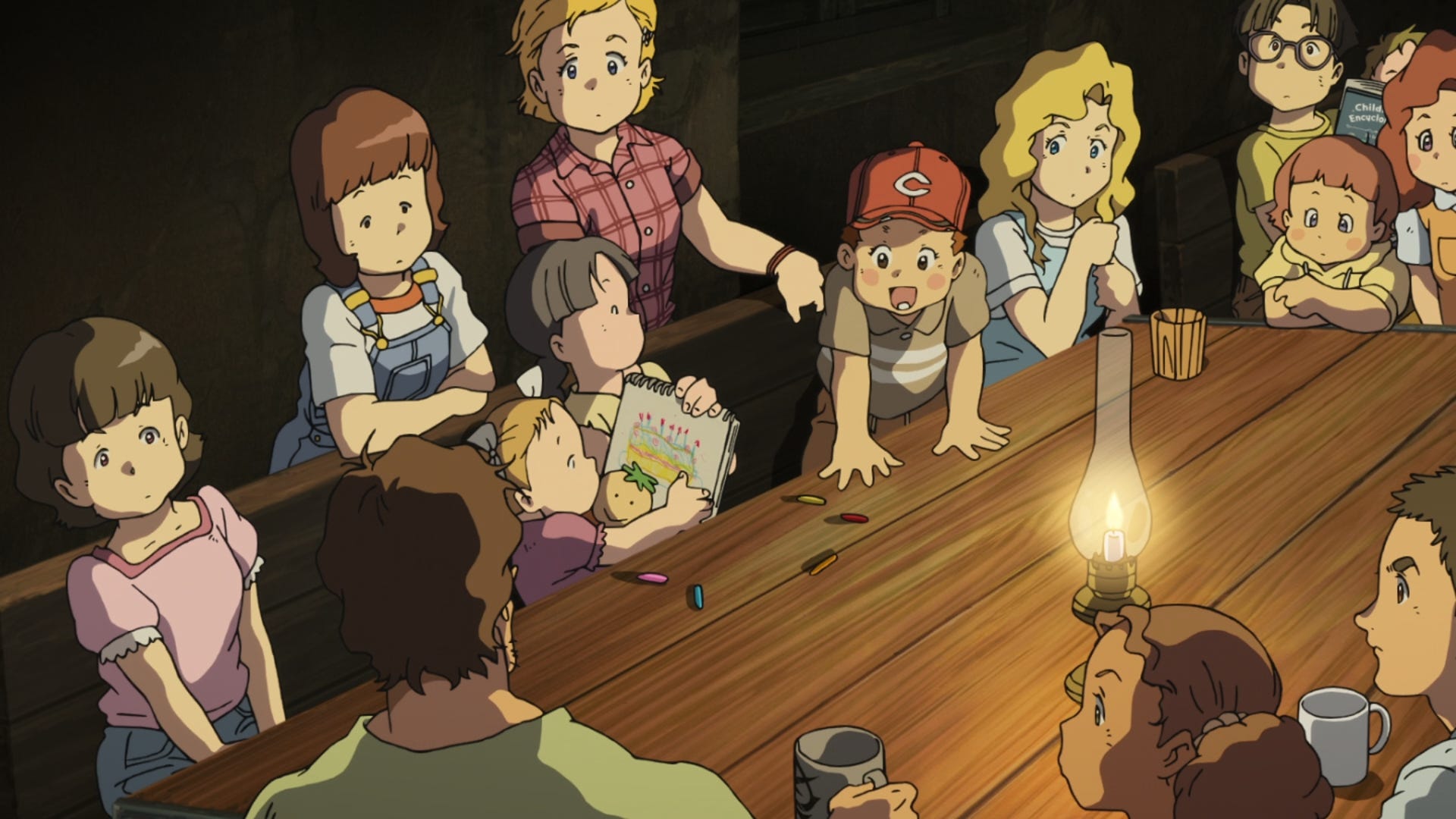
Despite its somber premise, the original TV episode is uncharacteristically cartoonish and unrealistic beyond the usual giant-robot suspension of disbelief. Though the film contains various cute jokes and homages to the original episode, great effort has been taken to rework Doan’s Island into something that more appropriately fits the tone and universe of Mobile Suit Gundam.
The 20-minute episode gets stretched out into a two-hour film, and we spend a lot of that extra time taking in the vibes. Doan has built a happy home for his many (many more than in the original!) kids on this remote South American island. We watch them till the fields, milk the goat, swim off the coast, and run and frolic on a beautiful island which still bears the massive crater scars of exploded giant robots, their metal corpses lying at the bottom of the sea. The island itself has more character in this film than it ever did in the original episode.
Doan’s island becomes a strategic location in the war, explaining why the military even cares about what this deserter does. This allows for some scenes of exhausted Bright with the idiotic Federation brass and a delightful scene-stealing extended cameo from beloved minor villain M’Quve.

There is an attempt to humanize Doan, who’s a larger-than-life figure in the original episode. This succeeds when he’s shown simply living: doing his best to be a good dad, working around the island, kindly accepting the marooned Amuro.
Some regrets remain
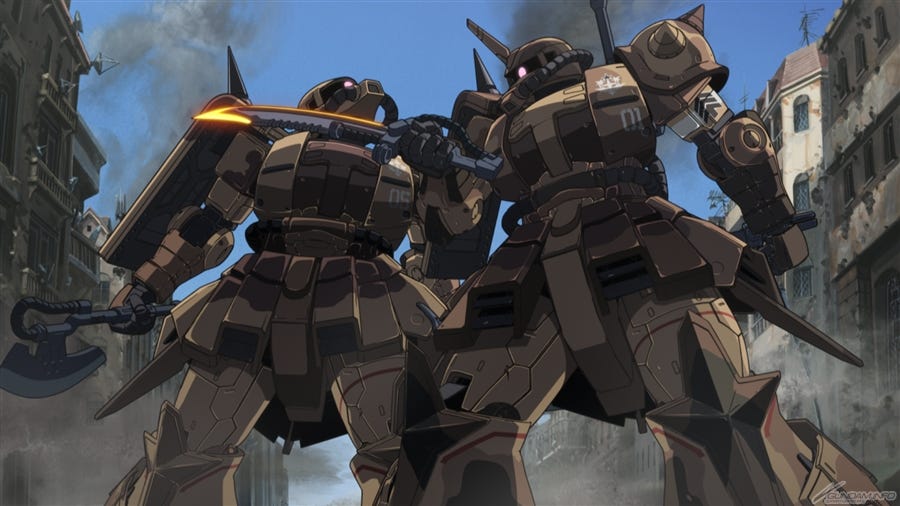
What fell flat for me was an attempt to give Doan a history by bringing his old unit into the action. While this makes perfect logical sense, there’s not a lot of room left in the movie for these characters. They’re also a pack of cliches with little to no background, easily dispatched, and seem only to be in the film to show off their cool custom High Mobility Zakus.
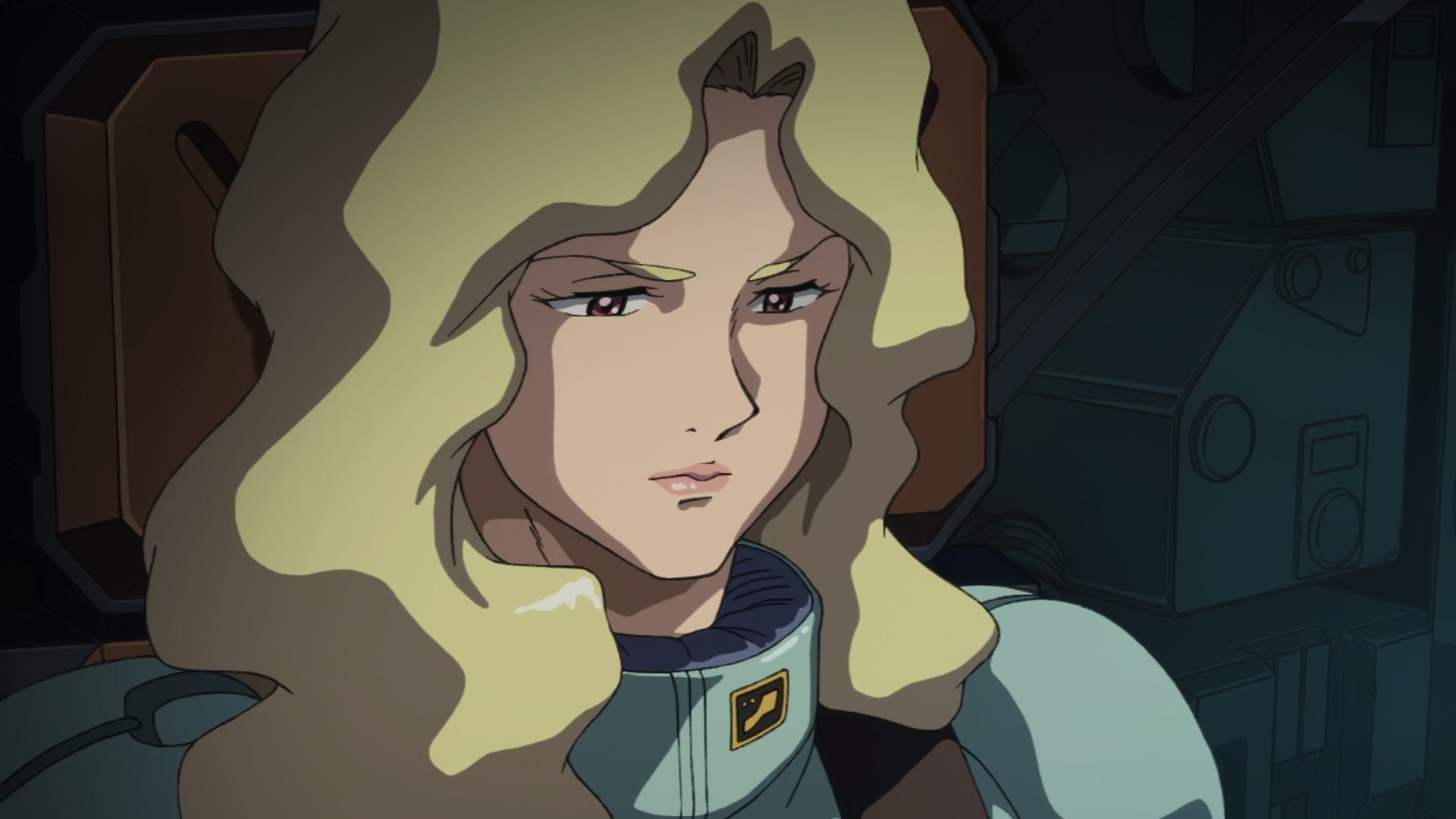
In particular, a character who appears to be Doan’s ex— she is at the very least clearly in love with him— is introduced and then promptly goes absolutely nowhere.
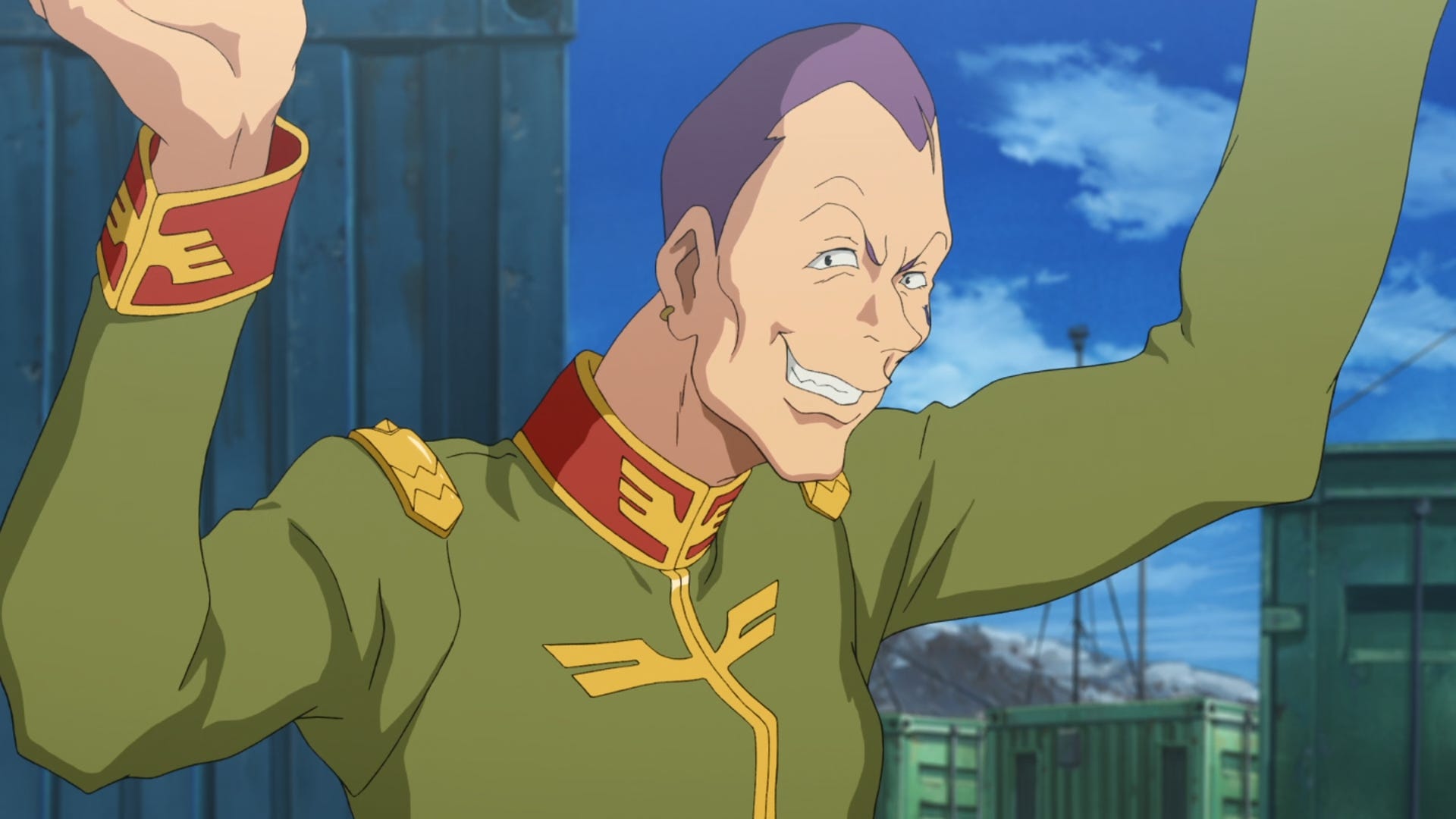
It was, however, fun to see a modern “edgelord” type villain drawn in the late 70s style of Mobile Suit Gundam.
Speaking of Zakus, there is only a bit of battling robot action in this Gundam movie: the Gundam itself is sidelined for almost the entire film, so the film sprinkles in gratuitous (but very satisfying) Zaku fights to keep mecha-heads happy.
The CG used for the mobile suits and the direction and choreography of the battles are top-class, but the busy, toy-like 3D models clash with the more elegant character art.
I’m not really a fan of the modern “realistic” Gunpla style with heavy panel lines and decals when it’s used in animation, and too many shots in Doan’s Island felt like I was watching dueling model kits, not gigantic machines.
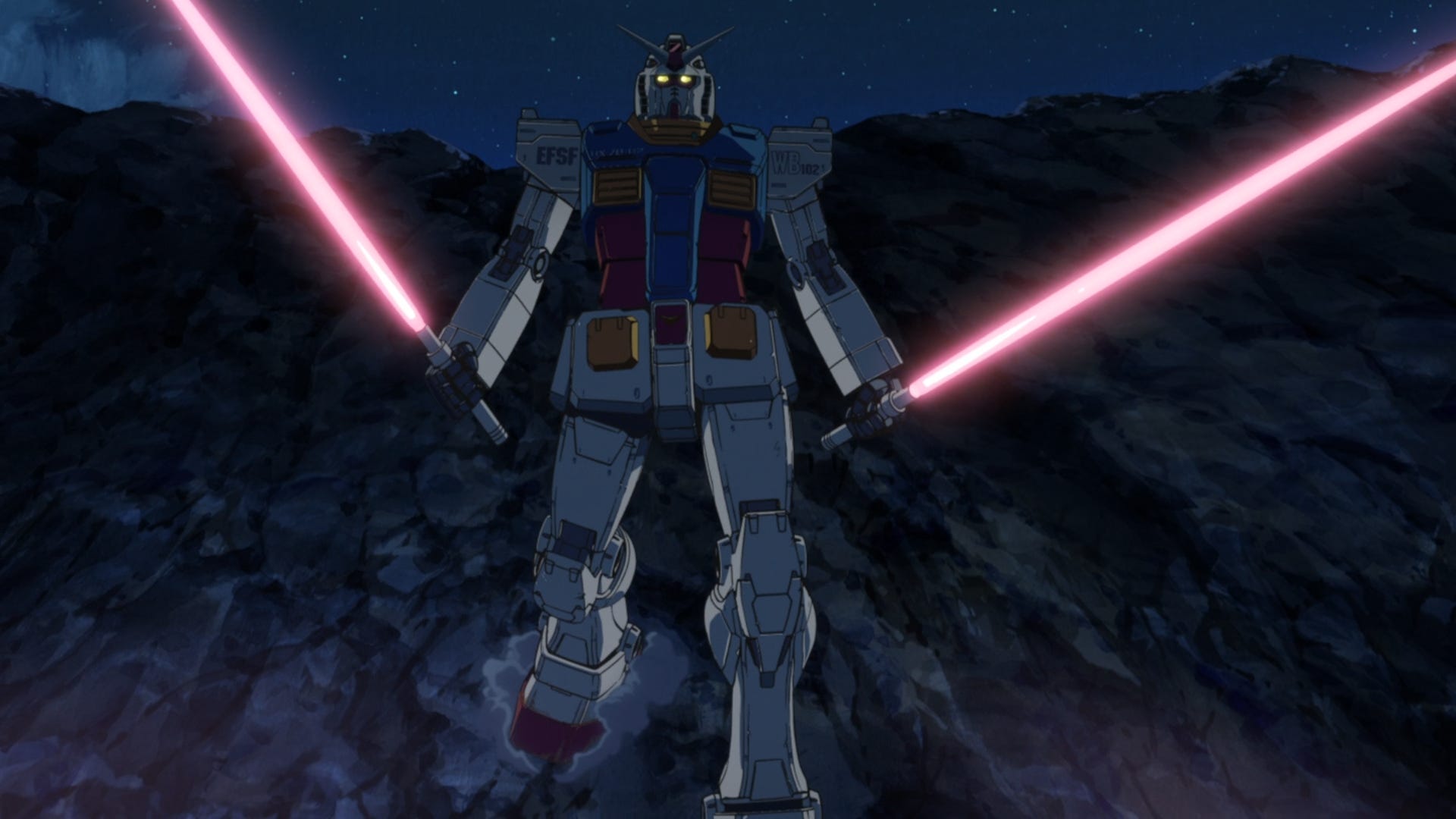
Something I liked about this movie was its insistent portrayal of the Mobile Suits as murder machines. In particular, the Gundam itself is shot not so much as a cool hero but as a deadly, terrifying force of nature: exactly the way Zeon’s grunt soldiers saw it. A particularly harrowing scene forces us to consider the miserable deaths they face.
Don’t turn around, Amuro
But it’s not really a robot battle movie, it’s a “stuck on an island” movie, and it’s very good at that. Amuro gets a lot of time to think things over: whether you’re a fan or not, it’s quite clear that he’s traumatized and unsure of himself. Putting him with a deserter is actually a perfect opportunity for reflection. By the time he finally gets off the island, you can feel that tiny bit of growth in him.
Though I think a non-fan could watch and enjoy this movie very much— Doan and the kids are extremely compelling even if you don’t know who these other people are— the people who will get the most out of it are obviously long-time lovers of Mobile Suit Gundam. If you’re one of those, make sure you see this movie as soon as you possibly can. It’s more than worth it.

